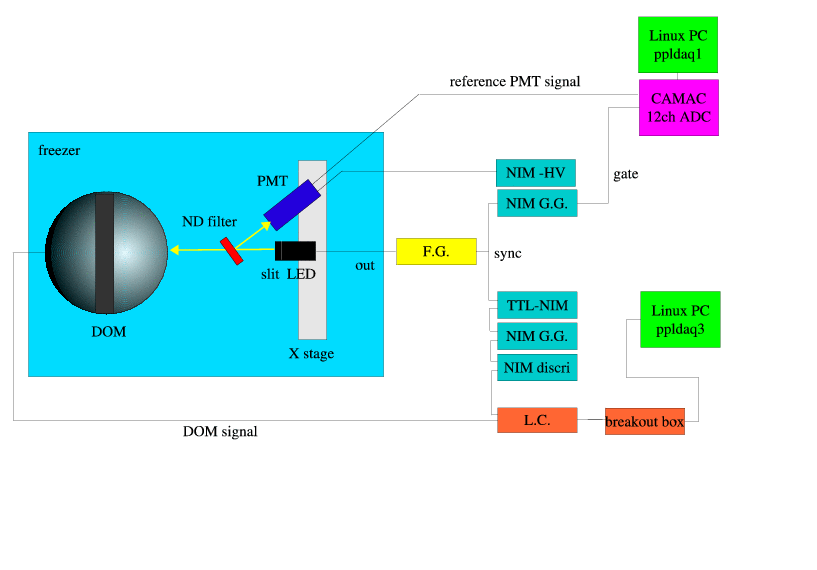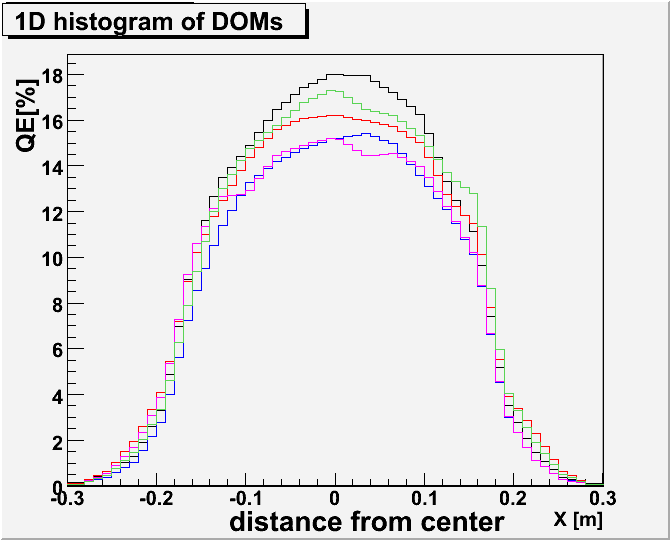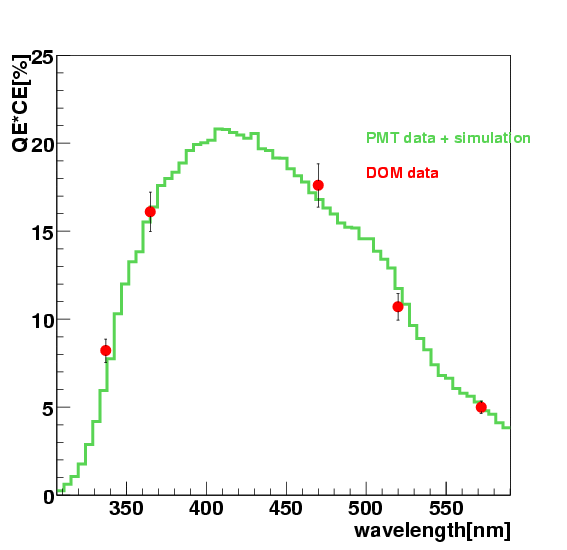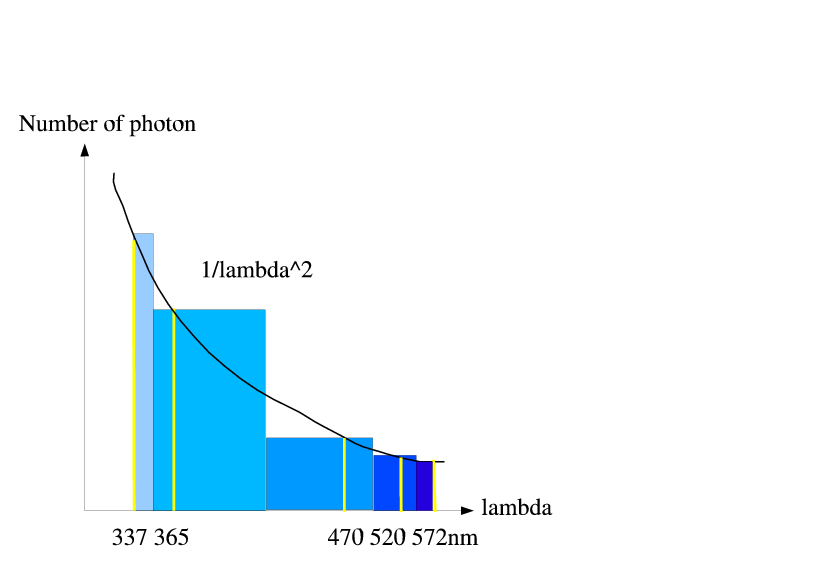| The Errors due to the Measurement of the DOM | Error[%] |
| (1-a) Systematic Error of the Absolute Calibration | ±7.8% |
| (1-b) Systematic Error of the Uniformity Measurement | ±5% |
| (1-c) DOM by DOM difference in the measurement | ±10% |
| The Errors due to the Detector Simulation of ROMEO | Error[%] |
| (2-a) The difference of the NPE estimation between the ROMEO and the data | +14.3%* |
| (2-b) DOM by DOM difference in the ROMEO (PMT cheracteristics) | ±4.1% |



| Lambda | Difference[%] | Azimuth[0~168deg] | Azimuth[180~348deg] | 337 nm | -7.6% | Fig | Fig | 365 nm | 14.5% | Fig | Fig | 470 nm | 11.2% | Fig | Fig | 520 nm | 33.8% | Fig | Fig | 572 nm | 17.6% | Fig | Fig |

